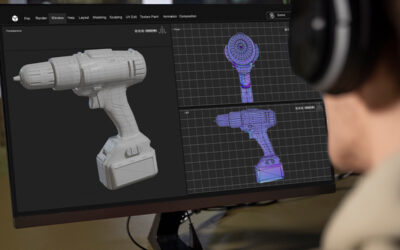Aperture cards represented the height of document management at one time. They were the best option for significant document archiving for a long time, especially for large-format materials such as blueprints. However, in the modern era, they are gradually losing significance. The technology to access the information recorded on them is getting more difficult to find, even though the format material itself has been useful for thousands of years. If your company has ever used aperture cards to hold sensitive and important data, now is the time to set up aperture card scanning so that you can ensure future easy access to that data.
Advantages of Aperture Cards
- First, indexed or easily accessible text can be used to accompany the image on the card. This approach of recovering specific documents is significantly more effective than the time-consuming procedure of progressively scanning through film to locate the relevant image.
- The second advantage is that since each card contains just one image, it is much simpler to exchange or replicate specific pieces of information. The card number, category, and date of issuance may all be printed by a card reader on the card. The insertion of handwritten annotations can enhance indexed data. The information on the aperture card can be read without a film reader. By assigning different colors to your aperture cards, you may offer a fresh visual layer of organizing.
- Since aperture cards not only allow for simple viewing but also feature clear indexing that can be swiftly scanned, they are considered excellent for storing and retrieving drawings and specifications. They can also be copied and moved around independently of one another as picture units. Businesses across a variety of sectors, including those in manufacturing, government organizations, and architectural and engineering firms, have been using aperture cards extensively for data storage.
Disadvantages of Aperture Cards
- Limited storage capacity: Aperture cards have a fixed size and can typically accommodate only a single document or a small set of related documents. This limitation makes it challenging to store large quantities of information efficiently. As a result, managing and organizing a large collection of aperture cards can become cumbersome and time-consuming.
- Time-consuming retrieval process: Locating a specific document within a collection of aperture cards can be time-consuming. Users need to physically search through the cards or use specialized equipment, such as card readers or microfilm readers, to find the desired information. This manual retrieval process can be slow, especially when dealing with a large number of cards.
- Fragility and susceptibility to damage: Aperture cards are relatively delicate and prone to wear and tear. Over time, the cards can become damaged, resulting in torn or scratched film, faded or illegible images, or misalignment of apertures. Exposure to environmental factors like humidity, heat, or light can further accelerate the deterioration process, potentially rendering the information on the cards unreadable or lost.
- Lack of searchability and indexing: Aperture cards generally do not offer built-in searchability or indexing features. Locating specific documents within a collection often relies on manual indexing or cross-referencing systems, which can be prone to errors or inconsistencies. This lack of searchable metadata or structured indexing makes it difficult to efficiently search for and retrieve specific documents.
- Limited sharing and collaboration: Sharing information stored on aperture cards can be cumbersome. Physical transportation or duplication of cards is often required, leading to delays and potential loss or damage during the process. Collaborative work on aperture card-based documents becomes challenging, as multiple individuals cannot simultaneously access or work on the same information.
- Cost and maintenance: While the initial cost of creating aperture cards may be lower compared to other storage methods, the long-term cost of maintaining and preserving them can be significant. Specialized equipment, periodic maintenance, storage facilities, and regular monitoring to prevent deterioration all contribute to the ongoing expenses associated with aperture card archiving.
Scanning of Aperture Cards
Converting an aperture card to a digital file is a relatively easy process, if you have the correct equipment. For all of your papers, including aperture cards, most document management firms can assist you in making the switch from paper to paperless. Advanced aperture card scanning technology is used to capture the picture of the aperture card during the scanning process, guaranteeing a high level of accuracy, clarity, and image scaling. In order to provide a real like-for-like depiction of the original drawing, providers of document scanning services take care to ensure that every feature of the original drawing is represented in the digital image. The digital photos can be categorized and catalogued when scanning is finished in accordance with the client’s requirements. This makes the scanned aperture cards accessible and guarantees their organization and searchability.
Benefits of Scanning Aperture Cards
- Digital preservation: Aperture cards often contain valuable and sensitive information, such as engineering drawings, maps, or architectural plans. By scanning aperture cards, you can convert them into digital format, ensuring long-term preservation and protection against physical degradation, loss, or damage.
- No need to use an aperture card reader: Card readers need expensive maintenance frequently. Getting rid of this old equipment will free up room in your office where your cards and readers are typically kept.
- Quick and simple access: It can be difficult to try to read the information on aperture cards. Due to cell corrosion, this information may be unintelligible. However, when you digitize the data, you’ll be able to rapidly search through each document to discover the details you require. Your aperture cards will be accessible from numerous computers and locations after being converted to digital format, offering your staff the information they require wherever they are.
- Improved collaboration: Digitized aperture cards enable seamless sharing and collaboration. Multiple users can access the digital files simultaneously, eliminating the need for physical transfer or duplication of cards. This enhances teamwork and facilitates remote collaboration, especially when dealing with distributed teams or external stakeholders.
- Space and cost savings: Physical aperture cards require dedicated storage space, which can become increasingly burdensome as the collection grows. Scanning eliminates the need for physical storage, freeing up valuable space and reducing associated costs such as maintenance, security, and space rental.
- Integration with digital workflows: Digital aperture card images can be easily integrated into existing digital workflows and processes. For instance, the scanned data can be linked to other related documents or integrated with enterprise resource planning (ERP) systems, enabling comprehensive information management and streamlined business operations
- Enhanced image quality: Scanning aperture cards can often result in improved image quality compared to the original cards. The digital images can be enhanced, corrected, or zoomed in for better clarity and visibility, aiding in accurate analysis, measurements, or replication of the information contained in the cards.
- Backup and disaster recovery: Digital copies of aperture cards serve as a reliable backup and contribute to disaster recovery strategies. By storing copies in multiple locations or on cloud-based platforms, you ensure that critical information remains protected in the event of a physical disaster or data loss.
- Increases effectiveness and productivity: Your staff members are better able to complete their work on time when they can access the data on your aperture cards quickly and effectively. As employees can participate more actively in their roles rather than wasting time looking for documents, it will also assist in raising to raise the morale of your staff.
- Long-term cost savings: While the initial investment in scanning equipment and services may be required, digitizing aperture cards can lead to long-term cost savings. Eliminating physical storage costs, reducing time spent searching for information, and minimizing the risk of loss or damage to valuable documents can result in significant cost benefits over time.
Aperture cards have certain advantages, but the disadvantages overwhelm the advantages. This makes aperture cards scanning a sensible option for businesses. Overall, scanning aperture cards brings efficiency, accessibility, preservation, and cost savings, making it an advantageous approach for managing and utilizing the valuable information contained within these cards. Organizations can preserve and protect priceless records while also improving data management, retrieval, and sharing procedures by digitizing aperture cards.
Take the leap towards modernizing your records management system.
Contact us today to learn more about our aperture card scanning services!




